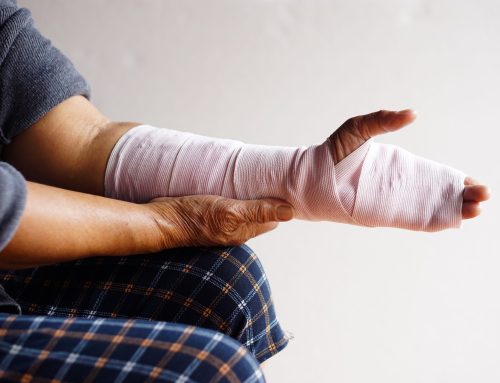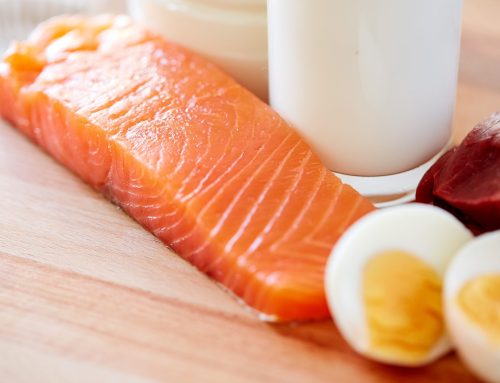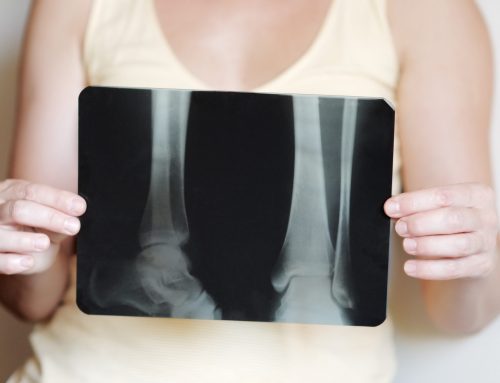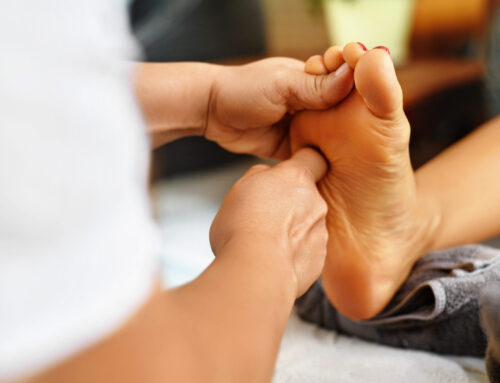Swimming is a great leisurely sport enjoyed by many beach-goers or pool-side patrons that want some relief on a warm summer day. It can also be the perfect exercise for cardiovascular fitness, muscle-building, and weight maintenance. Swimming may sound ideal for anyone suffering from joint problems from arthritis or varying conditions. However, if you’re concerned about your bone health, is this gravity-defying exercise right for you? Read on to learn about the effects of swimming on your bones.

The Effect of Swimming on Bone Health
What do swimmers and astronauts have in common? Their body adapts to the changes in gravity. When you’re floating around in a pool, you lose roughly ⅚ of your body weight that you would feel on land. While this is great for working out with aching joints, it doesn’t contribute to strengthening bone mineral density (BMD), which is what is measured to determine your bone strength.
According to Wolff’s Law, the way stress is applied to bones by the force of our muscles holding us up against the constant pull of gravity is what stimulates bone growth. Many studies insist that since swimming is a non-weight-bearing activity, it is not beneficial for bone health. Harvard Health Publishing recommends stair climbing, walking, jogging, or racquet sports over swimming and cycling. But there is good news for avid swimmers that can’t get enough of the water.
Swimming Benefits for Bone Health
Several studies have shown that water exercise is beneficial for bone formation but not bone density growth. One, in particular, followed a group of 35 postmenopausal women while they participated in a 60-minute water exercise class three times a week. They discovered that the mineral content of the women’s bones improved, implying that the bones were stronger, despite their bone density showing no signs of improvement.
This has been a recurring theme in studies of water exercise and bone health. While swimmers’ bone densities are comparable to sedentary control groups, their rate of bone turnover is significantly higher, implying that their bones became more fracture-resistant and capable of self-repair. Swimming helps build and maintain muscles and enhance coordination, flexibility, and balance, in addition to improving cardiovascular fitness, which can improve overall health and lengthen life.
Osteoporosis fractures, for example, are most commonly caused by falls. This is partly due to the fact that many older people have trouble balancing and weaker muscles. Strengthening your muscles and improving your balance as you age can help you avoid falling. For those with arthritis who are unable to engage in high-impact exercises like walking, jogging, or dancing, swimming is often recommended as an alternative form of exercise. Someone looking to build bone strength without any physical limitations may want to add some weight-bearing activities into their routine instead of solely swimming for bone health.
Swimming and Increasing Bone Health
Just because you’re an avid swimmer doesn’t mean you will lose bone mineral density, especially if you’re proactive now. By including calcium and vitamin D in your diet and broadening your exercise repertoire, you can still enjoy doing laps without compromising your health. You’ll want to ensure you’re getting between 1,000-1,200mg of calcium per day and 400-800 IU of vitamin D. Here’s where you can find it!
Best Foods for Bone Health
To maintain strong bones, you need enough calcium and vitamin D, which assist with your body’s ability to absorb calcium. A balanced diet should provide you with all of the nutrients you require for strong bones. However, if you find that you’re lacking some calcium and vitamin D sources, here are our top recommendations:
Calcium
- Milk, cheese and other dairy products.
- Green leafy vegetables.
- Nuts.
- Fish where you eat the bones, such as salmon or sardines.
Vitamin D
- You can’t eat it, but the best place for vitamin D is to spend some time in the sun. Just be sure to put on sunscreen to protect your skin!
- Supplements.
- Egg yolks.
- Fortified foods, i.e. breakfast cereals or spreads.
Best Exercises for Bone Health
Bones can be strengthened and maintained through specific types of activity. One of the best kinds of exercise for bone health is weight-bearing or high-impact training, which promotes the formation of new bone. Walking, dancing, low-impact aerobics, elliptical exercise equipment, stair climbing, and gardening are just a few examples.
To reduce mineral loss, these exercises focus directly on the bones in your legs, hips, and lower spine. They also have cardiovascular advantages, which improve the health of the heart and circulatory system.
Our bones are the support system that we depend on. It can throw your entire life out of balance when one gets fractured. The most painful part beyond the break is waiting for life to get back to normal. Thanks to a leading Canadian distributor, you can take control of your healing process with a low-intensity pulsed ultrasound device (LIPUS). Studies have proven fractures will heal 38% faster with their convenient 20 min/day application. Contact us to learn more about the revolutionary treatment for better healing.
Have you ever suffered from a fracture? How long did it take to heal? Did it stop you from doing anything you enjoyed? Share your story with our readers in the comments below.






Leave A Comment